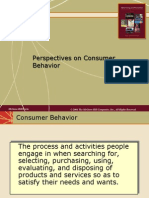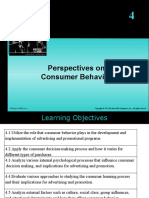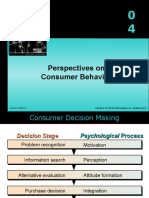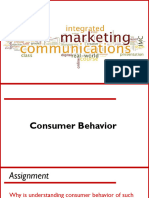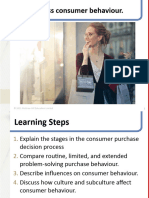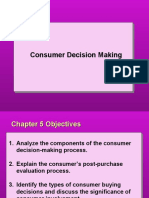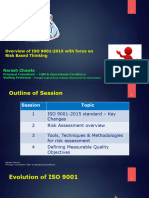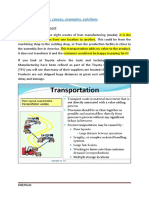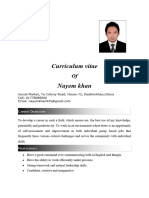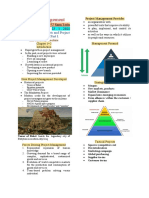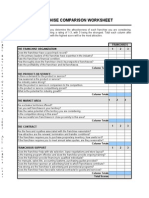0% found this document useful (0 votes)
39 views35 pagesChapter 4
The document discusses consumer behavior and the consumer decision-making process. It outlines the learning objectives which focus on understanding consumer behavior and the influence of external factors. It then provides an overview of consumer behavior as a process involving searching for, selecting, purchasing, using, evaluating, and disposing of products and services. The document also summarizes the consumer decision-making process which involves problem recognition, information search, evaluation of alternatives, and purchase. It examines factors that influence consumer motivations such as hierarchy of needs and psychoanalytic theory.
Uploaded by
Fatima MCopyright
© © All Rights Reserved
We take content rights seriously. If you suspect this is your content, claim it here.
Available Formats
Download as PPTX, PDF, TXT or read online on Scribd
0% found this document useful (0 votes)
39 views35 pagesChapter 4
The document discusses consumer behavior and the consumer decision-making process. It outlines the learning objectives which focus on understanding consumer behavior and the influence of external factors. It then provides an overview of consumer behavior as a process involving searching for, selecting, purchasing, using, evaluating, and disposing of products and services. The document also summarizes the consumer decision-making process which involves problem recognition, information search, evaluation of alternatives, and purchase. It examines factors that influence consumer motivations such as hierarchy of needs and psychoanalytic theory.
Uploaded by
Fatima MCopyright
© © All Rights Reserved
We take content rights seriously. If you suspect this is your content, claim it here.
Available Formats
Download as PPTX, PDF, TXT or read online on Scribd
/ 35












